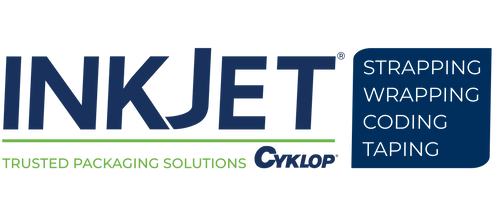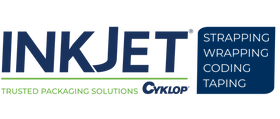Printing on Metal with Inkjet Printers and Laser Systems
Metal materials are incredibly versatile and are used to create a wide range of products and product packaging. Metals such as steel, copper, and brass are used to produce everything from small screws and nails to building materials. Manufacturers of aerospace parts, automotive components, electronics, wires/cables, and construction supplies utilize metal to create durable goods that can last for years without issue.
Metal is also one of the most popular packaging materials in the world. As of 2021, experts report that metal packaging makes up around 13-15% of the entire global packaging market. Taking the form of cans, tins, drums, lids, pails, and foil, metal packaging is commonly used to house:
Whether you use metal to manufacture or package your products, you likely need to be able to print traceable codes such as barcodes, serial numbers, or lot codes onto the metal to prepare your goods for distribution or retail sale.
If you are new to printing on metal, you’ve come to the right place. In this guide, we break down the key aspects of metal printing and explore which inkjet printers and laser systems are ideal for metal marking applications.
Printing on Metal with Inkjet Printers: Ideal Solutions for Different Applications
Inkjet printers have been used to complete metal coding applications for decades. Today, companies of all sizes and industries still use inkjet printers to mark metal parts, components, cans, and other packaging forms.
Continuous inkjet (CIJ) printers and thermal inkjet (TIJ) printers are the go-to printing technologies for metal marking applications. CIJ printers like the DuraCode Touchscreen and DuraCode Pigment are built for production line printing. Their fast printing speeds, wide ink selection, and substantial ink throw distances make them ideal for high-volume facilities. Moreover, the piezoelectric printheads on CIJ printers are ideal for coding curved surfaces, such as those featured on:
- Cans
- Pipes
- Pails
- Drums
- Tins
- Cables
TIJ printers are much smaller and lighter than CIJ printers. While CIJ printers often weigh close to 100 pounds when installed and filled with ink, TIJ printers often weigh around 5-10 pounds. Thanks to their small size, TIJ printers are easy to maneuver, offer simple installation, and are available in handheld models.
Although TIJ printers are compact, they can create higher-quality images and larger codes than most CIJ printers. For example, the Anser X1 TIJ printer can create markings up to 1” tall at 600 x 600 DPI. CIJ printers, on the other hand, specialize in creating smaller, lower-resolution codes at speeds at or above 300 m/min. Most TIJ printers are not able to match this coding speed, as the average TIJ max print speed is around 100 m/min. However, high-end TIJ models like the Anser X1 do offer CIJ-level speeds.
This chart breaks down the general pros and cons of both CIJ and TIJ printers:
|
|
|
|
|
|
|
|
|
|
|
|
In broad terms, if you are creating low-resolution codes on a high-speed production line, a CIJ system is the solution for you. CIJ units can operate up to 24 hours a day without interruption, offer reliable curved-surface marking, and are compatible with numerous specialty inks and aftermarket formulas. With these features, CIJ printers can complete unique and demanding metal printing tasks without any work stoppages and with minimal risk of error.
However, if you need to create larger images or higher-quality codes and do not require CIJ-level speed, a TIJ printer will likely better suit your needs. TIJ printers do not have as many ink options as CIJ printers and are not capable of curved-surface printing, but they deliver high-quality results, and certain models are capable of high-speed coding. Additional benefits include minimal maintenance requirements and low upfront costs.
Printing on Metal with Laser Coding Systems: Industrial Coding and Part Marking with Fiber Laser Units
The traditional approach to printing on metal is to install an inkjet printer onto a production line and directly print onto the metal’s surface. In recent years, however, laser coding systems have proven to be another viable option for metal marking.
Since the 1990s, large-scale manufacturing and packaging operations have used laser systems to mark their metal materials. Compared to conventional printers, laser systems provide users with several advantages, including:
- Industry-leading code accuracy
- Long-lasting and durable markings
- Very low ongoing costs
- No ink or solvent is required to mark materials
- Minimal maintenance requirements
For metal marking, the ideal laser coding solution is fiber laser. Fiber lasers produce beams at the optimal metal-marking wavelength, while other laser technologies produce beams that are either too weak or too strong. As a result, fiber laser systems like InkJet, Inc.’s F8100F fiber laser marking machine can place sharp, high-contrast markings on a wide range of metal substrates, including curved surfaces.
Benefits of the F8100F include:
- Coding speeds up to 2,000 characters/second (when using the high-speed scanner)
- An air-cooled laser source for 24/7 uninterrupted coding
- Smaller spot size perfect for marking difficult materials and complex coding applications
- Multiple high-resolution print field lens options for high-contrast coding
- An ingress protection level of IP54 for reliable operation in harsh environment
In addition, the system is also capable of marking stationary substrates—an ability that is particularly valuable to part marking operations and custom metal shops.
Have More Questions about Printing on Metal? InkJet, Inc. Has Answers
Printing on metal is an essential part of countless manufacturing and packaging workflows. From applying date codes to food cans to placing traceable information on aerospace components, well-developed metal printing workflows enable companies to outfit their products with required codes and traceable markings.
At InkJet, Inc., we have been helping companies complete metal printing applications for more than 30 years. Offering a range of printing technologies, laser marking systems, and specialty ink formulas, the InkJet, Inc. team can help you create the ideal solution for your coding needs. Call us today to discuss your metal marking options.
For more about printing on metal, contact InkJet, Inc. online or call 1(800) 280-3245.
.



